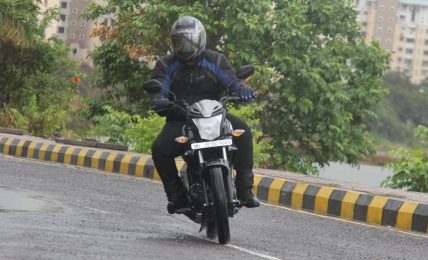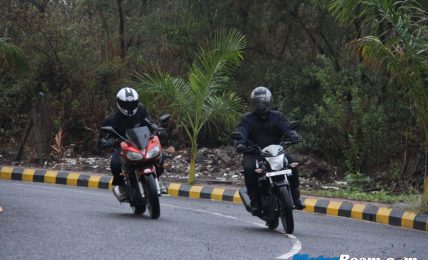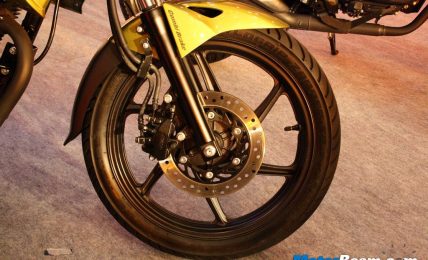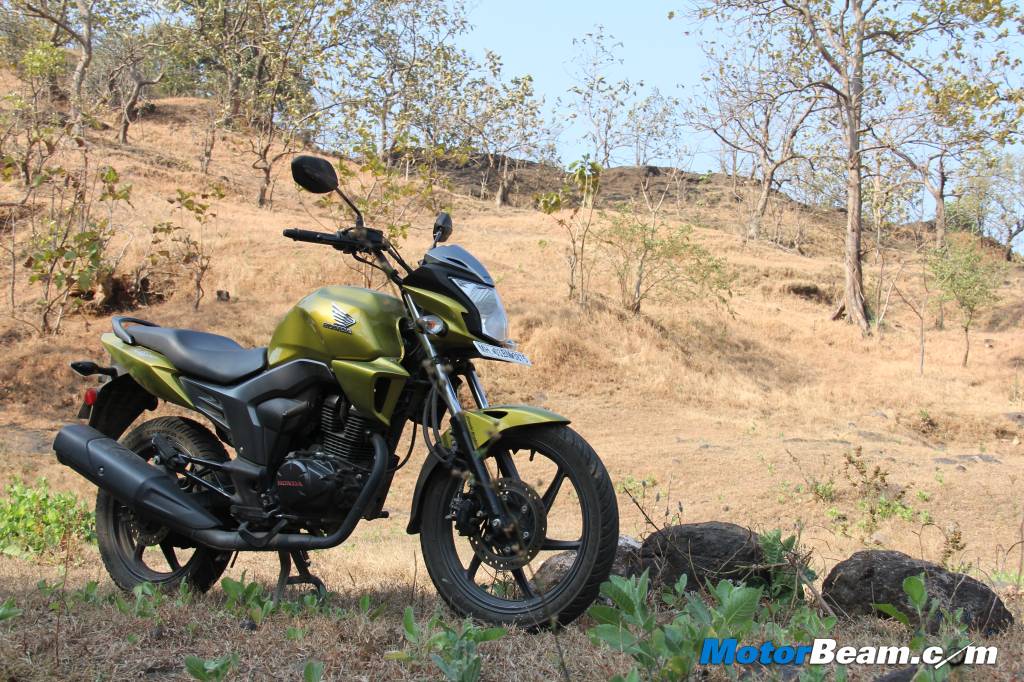
Honda CB Trigger Long Term Review
Bike Tested: Honda CB Trigger
Kms Done: 2653 kms
Test Started at: 1401 kms
Test Concluded at: 4054 kms
Fuel Cost: Rs. 4510/-
Liters: 55
Mileage: 52 km/l (Combined), 49 km/l (City), 57 km/l (Highway)
The CB Trigger is not an all new bike but subtle changes make it an attractive buy.
Little things matter the most. Imagine if your dad gave you 20% more pocket money without asking in the very month you needed it? Joy levels are highly insane, right? Well matter of fact, it is on both the sides. Just like your dad was happy with you and gave you the gift, it’s because you did something for him, which resulted in profit or happiness. However, for manufacturers it’s only profit. So when Honda were planning a new 150cc motorcycle for the market they realised that this platform (150cc motorcycle) has been so well utilised that profits are way too much and demand is shrinking. Honda decided to give little things to add spice to the package. Honda also decided to take the entire chassis, design, engine and bits and bobs to give it a complete makeover. Result? The Honda CB Trigger. A 150cc motorcycle without the Unicorn badge was launched. Sounds like a new sub or main platform to us.
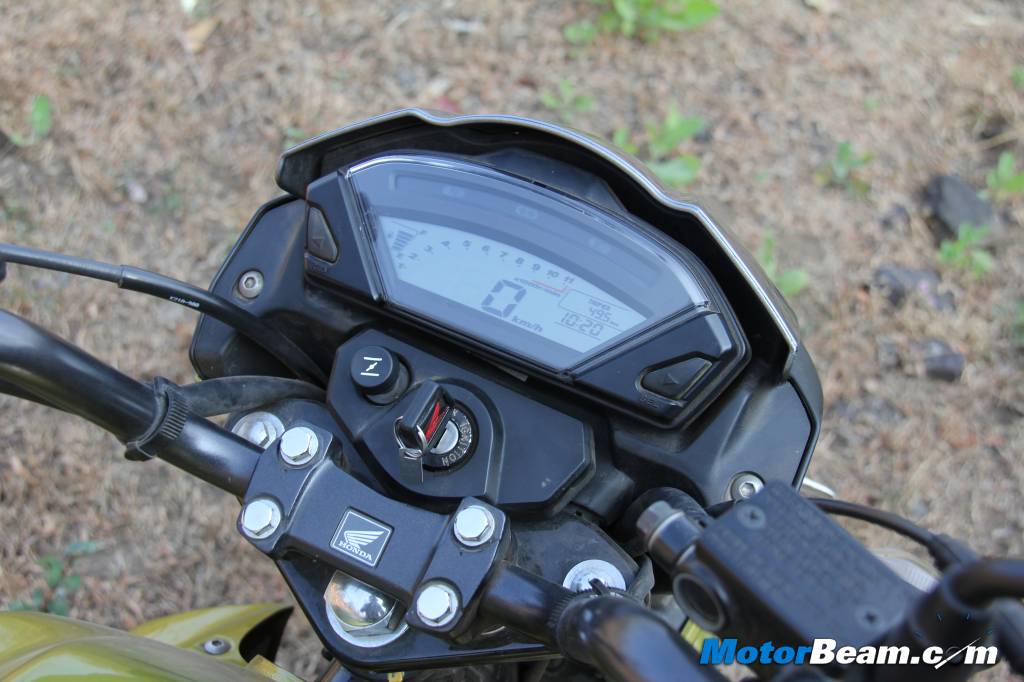
The CB Trigger is a motorcycle with which Honda aims to gain some market share in the competitive 150cc segment while also fortifying their presence where they lacked, motorcycle volumes. Has Honda succeeded? Yes, we see a lot of CB Triggers here on the roads of Maharashtra, all in different colours too. Reason? Extremely well priced from base variant to the middle variant. Top end variant is so expensive that you can stretch your budget a bit and get the Pulsar 200 NS if you wanted to. The base variant that comes with rear drum brakes is bang on against the highly popular Pulsar 150. How close? Well it’s just Rs 300-400/- cheaper than the Pulsar. Dual disc variant is bang on against the superlative FZ. Honda has indeed done their homework very well. Full marks then? We liked it very much during our test ride and we were keen to spend more time with it. We decided to keep it for three months to find out everything about it and tell you if it is the 150cc bike you have been waiting for?
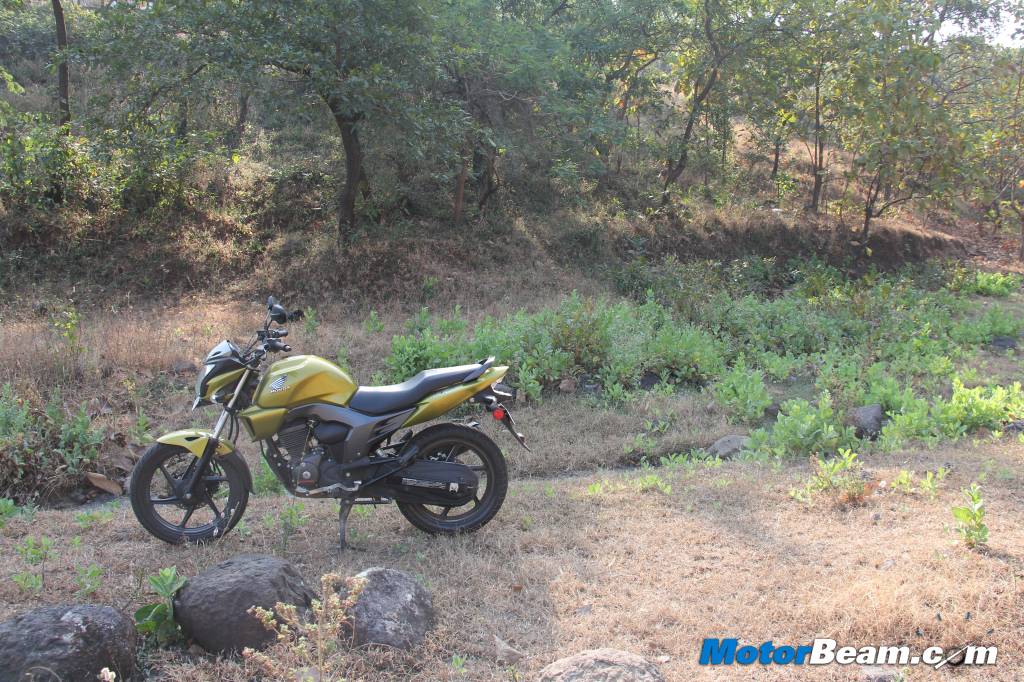
Look at the motorcycle and it does not look outright sporty or commuter. The CB Trigger stands somewhere in between and there are no fancy colours to make it look sporty either. Golden green, red and black are colours offered, in which this golden green, which we had, looks all right, but black suits it the most. The new fatter exhaust is only there to make it look beefy and grab customers from the competition. The criss-cross side sets remind me of the first generation Hero Honda CBZ.
Fit, finish, wires and pipes have been taken care of very well. What also grabs the attention of everybody including the rider is the full digital dash, which is inspired from bigger siblings and is one of the major plus points that the CB Trigger has, attracting many potential customers. The LED tail lights are a brand new addition and the CB Trigger is the only bike in Honda’s India stable to have them. The number plate light is also a separate unit this time, mostly on Japanese bikes it’s cleverly done by using the tail light itself.
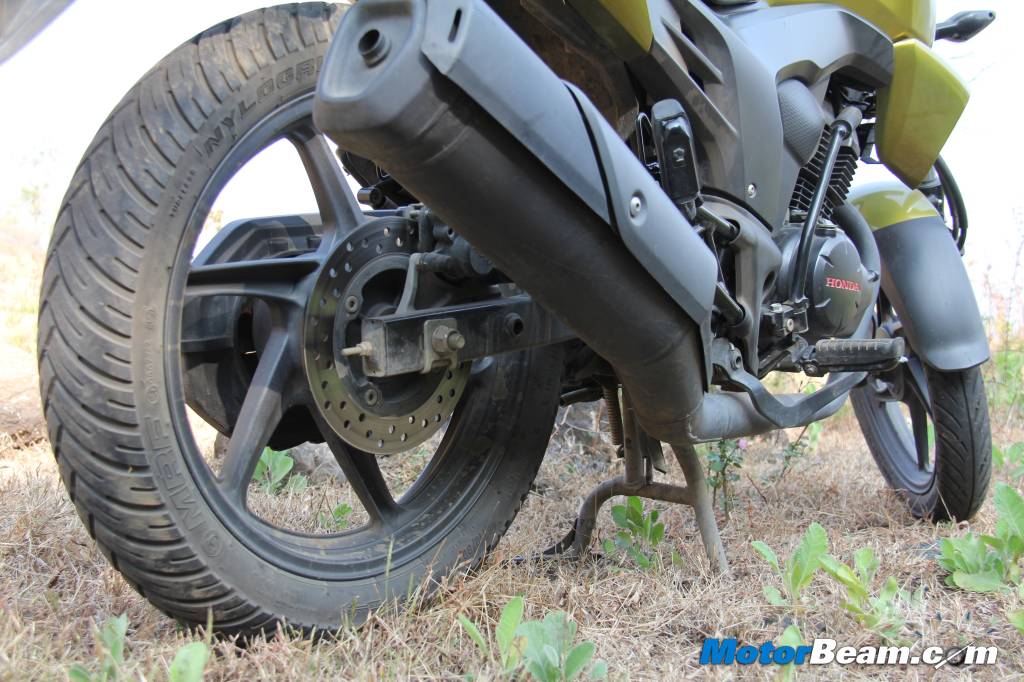
The engine on the CB Trigger is borrowed from the Unicorn and there are subtle changes made to the ignition and the exhaust timing. Major change, which Honda always keeps playing, is the camshaft. Slightly high lift camshaft has improved fuel economy by a good margin and increased mid-range and top-end response. When I mean response, it’s only response. There is no increase in top speed or numbers. The old Dazzler, Unicorn and Trigger have different 60-100 km/hr roll-on timings. Low-end is just about adequate while mid-range offers excellent punch and on the highway you just need to twist the wrist to keep up with bigger segment bikes with absolute comfort, with no stress on the engine. Taller gearing lends it the big bike feel but it obviously lacks power. Honda should have taken this opportunity to increase power and torque as every other 150cc has already done so. Next update is far far away.
High-speed stability is good but when crosswinds get high, the lighter the rider, the more lively the front-end becomes. Reason is the rear biased weight distribution. Several trips to Pune from Mumbai made us realise that the overdrive gear could have been taller, but then it would miss out on the punch, which it is capable of delivering even with a pillion on-board. Reaching the 115 km/hr (speedo indicated) top speed would be a more time consuming affair and would make overtaking on the highway a bit hard. Overall, cleverly done gearing with perfectly matched power band, very Honda indeed!
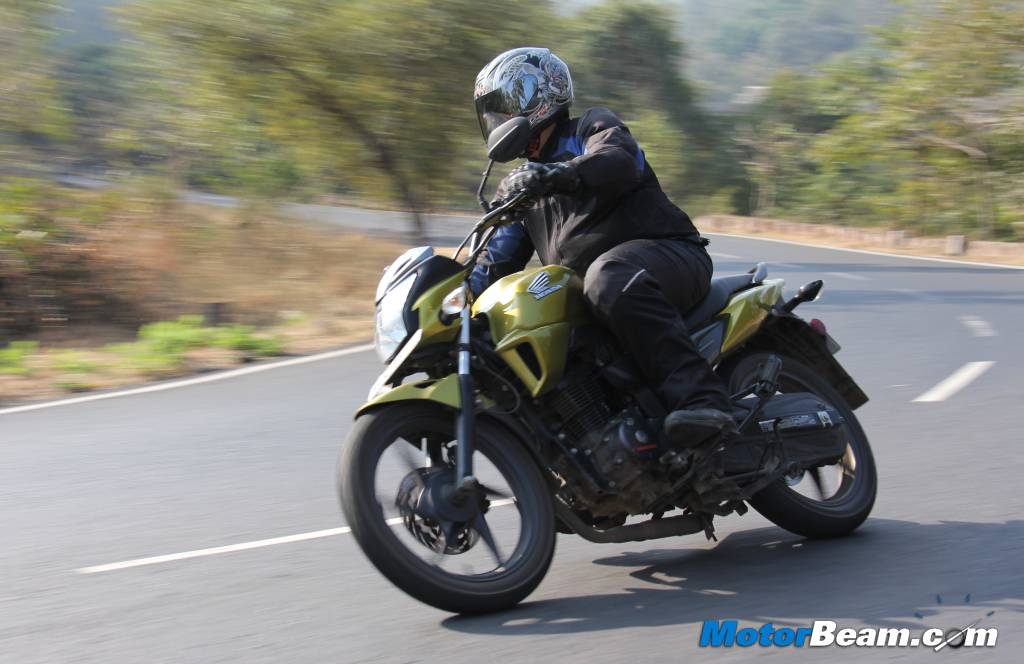
The bike that we had with us was equipped with the Combi-Brake System. A system that links the rear brake to the front ones and controls the rear brake through a mechanism. If you press the front brake, the main two pistons apply force and the vehicle stops. If you apply the rear brake, the front brake is also applied. It is the middle piston which is smaller than other primary pistons that applies the brakes at the same time. Both front and rear brakes are lacking initial bite, which we do not expect from smaller bikes, but it’s not significantly less than when compared to big bikes like a KTM Duke 390 or superbikes.
If these brakes had a strong initial bite seen on this category of bikes then braking power would have been more than enough and would disrupt every time the rider braked hard because both the brakes are interconnected. In slow moving traffic, this is really a boon. Just a dab on the rear brakes and you can feel that the front is not diving in, which happens on normal bikes because the front is also braking but without any hiccup or without letting you know (Honda way is the smooth way). Only on close observation, you will find this working. It is only when you are riding spiritedly on twisties or during emergency braking will you apply both brakes together (which you should always do).
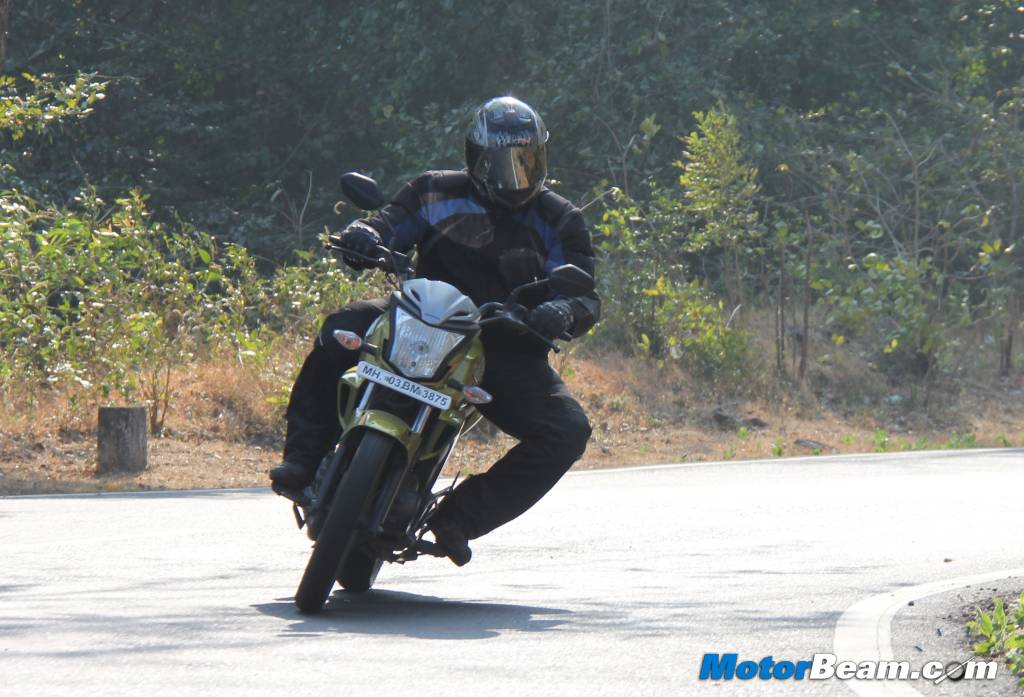
Dynamically, the Honda CB Trigger is even nippier and agile in the city than the flickable Dazzler and easy to use decade old Unicorn. Every time we constantly ended up cutting traffic more spiritedly than usual because of the tight dimensions and peppy power delivery from the engine. Excellent soft-compound tyres from MRF make things delightful too. The CB Trigger takes sweepers in a very poised manner, cornering on the bike is just very easy and getting in and out of the corners is excellent because of the flawless engine and stiff suspension setup which works in tandem damn well. Sure, it is not as sporty as the FZ, still it can keep up with it despite being on the conservative side in the hands of a spirited rider.
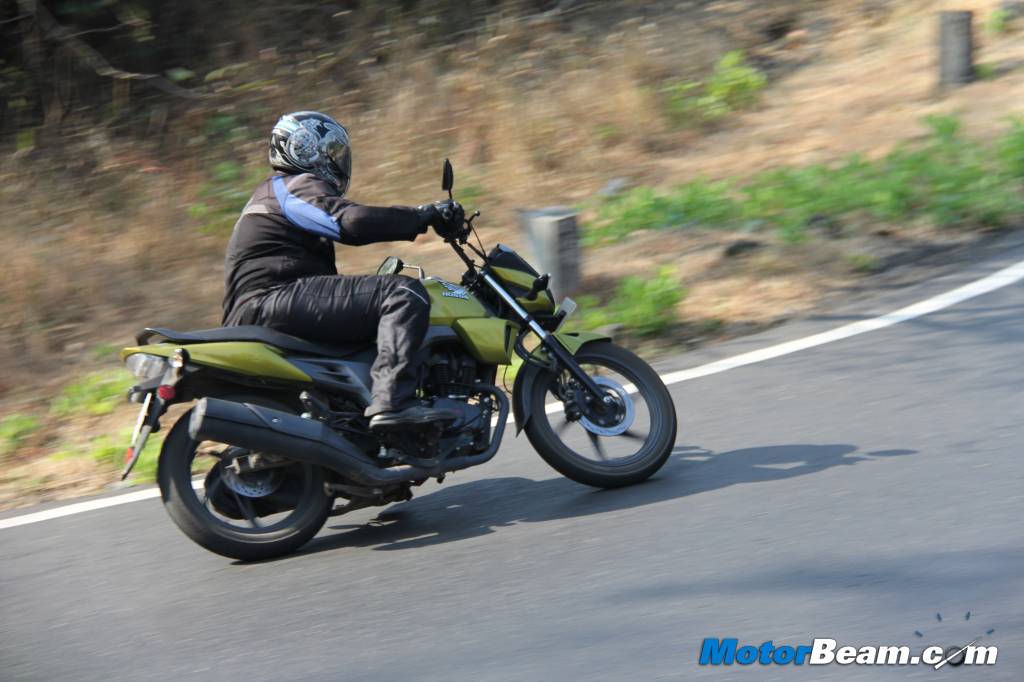
Front set foot pegs are not ideal for sporty riding and we were adamant on hating the entire bike for it. However, when I decided to take a pillion for a 250 km (one side) ride, I quickly realised that it is immensely comfortable only because of the front set foot pegs. Not only was I comfortable but also the pillion did not complain at all about comfort. Usually pillions complain quite quickly when it comes to a long ride. This technique liberates a lot of space for the pillion, which I found out after sitting behind. The kind of space is available for the pillion to move around is immense. My pillion being incredibly tall, he was comfortable, which was a complete awe moment for me. Obviously, I am still going to criticise the foot pegs’ position nevertheless. Why? The reason is that the CB Trigger does vibrate between 4000 to 6000 RPM, which in top gear is around 70-80 km/hr. With this kind of foot peg positioning, it makes the rider completely attached to the tank and the vibrations makes part of his body completely numb over a long distance ride.
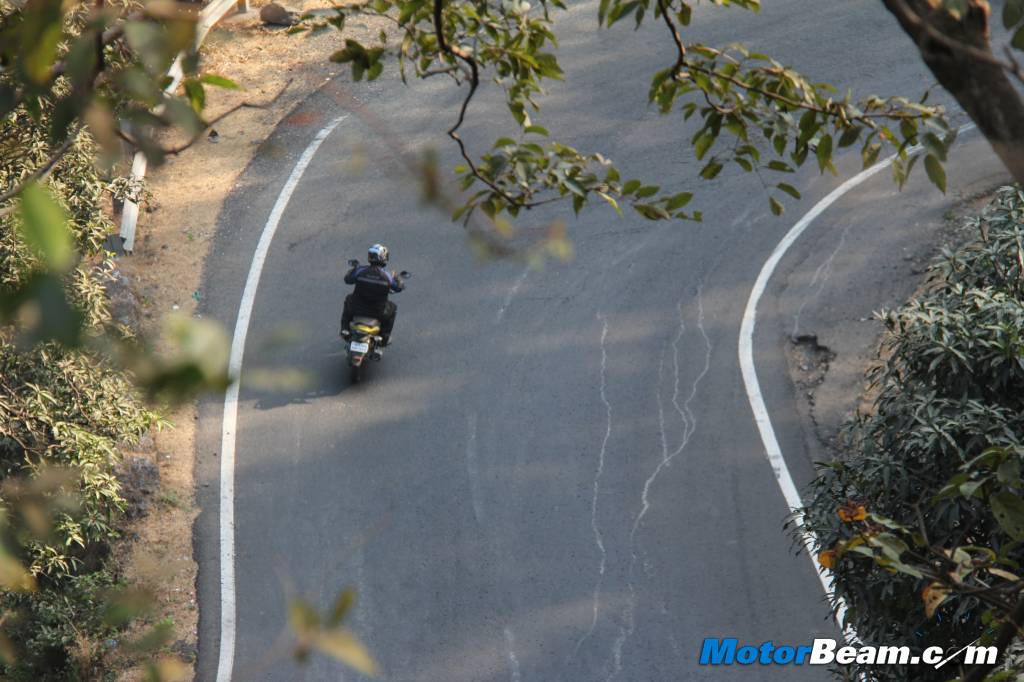
The fuel gauge takes some time to understand. Even when 3.5/4 litres of petrol is left, the last bar will continuously keep blinking. Isn’t blinking reserved for the last 1.5 litres in smaller bikes with smaller capacity fuel tanks? With that amount of fuel, you can do 100 kms if you ride carefully and hence the bar should not blink, it is irritating at times. The headlight has an incredibly wide and long throw. Illumination is good with these motorcycles but because the spread is so vast, illumination seems slightly short on those dual carriage highways at night. We got our CB Trigger serviced and what we quickly noticed that the economy jumped from 33 km/l to 42 km/l despite riding hard and fast. This purely shows that an oil engine is so critical for high fuel efficiency. A fact avoided by most of the customers in the sake of saving few bucks and destroying the engine and burning pockets everyday instead of one single time.
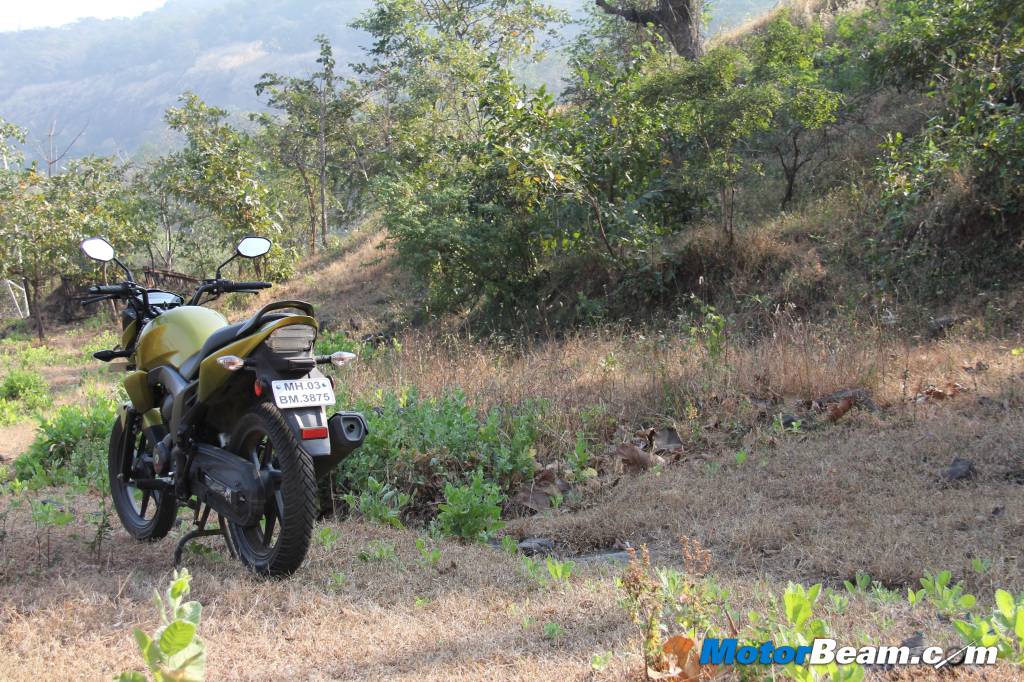
A well priced Honda is unheard off in the enthusiast segment but the CB Trigger is here with the change. If you are looking for a new entrant in the 150cc segment, the CB Trigger is the bike which will fulfil your needs. A motorcycle which is practical and fun at the same time, returning excellent economy numbers and top class performance with ease of use on a daily basis. There is no other Honda 150cc you can buy today as they are massively dated. The CB Trigger with Honda’s reliability and variants to choose from, is hard to ignore in the 150cc segment right now.
The Honda CB Trigger offers superb city drivability with adequate highway performance from the silky smooth engine. With a healthy mileage figure of 52 km/l (average efficiency) and VFM proposition, it’s a great option for those looking for an all-rounder in the 150cc segment.
Honda CB Trigger Cost Of Service
–
* Paid Service – Rs. 300/-
* Engine Oil – Rs. 350/-
* Spark Plug – Rs. 125/-
* Brake Pad – Rs. 800/- (for CBS variant with Nissin callipers)
* Air Filter – Rs. 200/-
Further Reading –
Honda CB Trigger Long Term – Initial Report
Honda CB Trigger Review
Honda CB Trigger Video Review
Honda CB Trigger vs Yamaha Fazer


